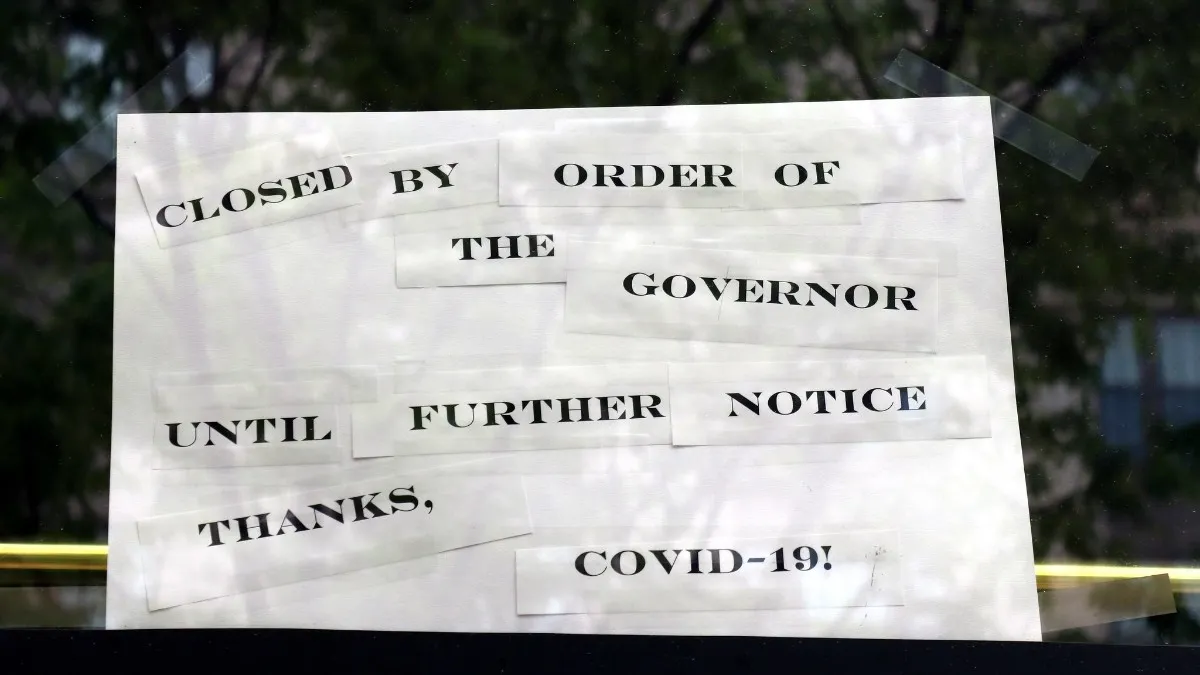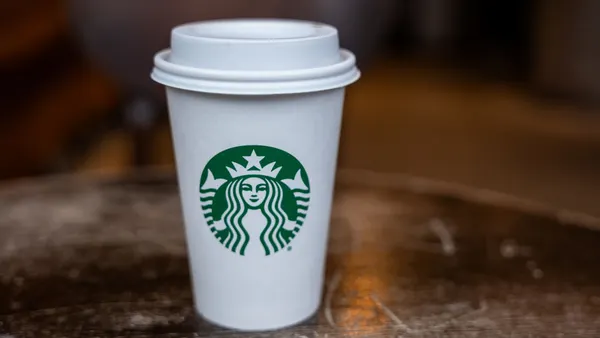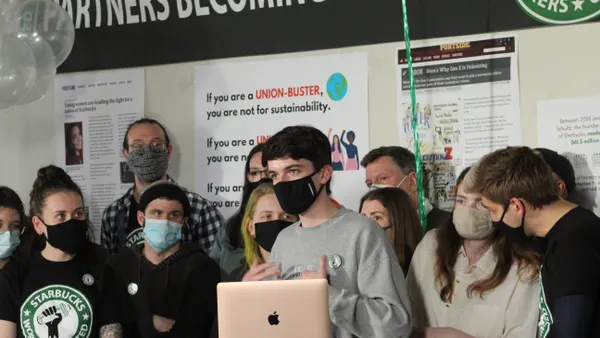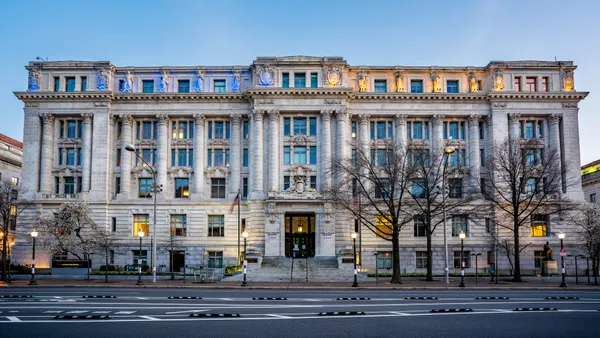Dive Brief:
- The National Restaurant Association sent a letter to the National Governors Association and U.S. Conference of Mayors on Monday detailing the health and safety efforts that have been made to keep customers and employees safe during the pandemic, according to a press release and a copy of the letter sent to Restaurant Dive.
- The letter, written and signed by NRA's SVP of science and industry Lawrence J. Lynch, argues that inaccurate information about the industry continues to be used in media coverage, social media and statements from public officials, which often cite a non-peer reviewed study that suggests COVID-19 could have spread in a crowded restaurant in China. This incident occurred before U.S. restaurants put safety protocols and social distancing measures in place, and the study has not been reproduced in the U.S.
- "The ongoing comparisons between a single restaurant in China to America's restaurant industry, [steeped] in a legacy of food handling safety, has had a negative impact on U.S. restaurants, our employees, and has hindered our path toward recovery," Lynch writes in the letter.
Dive Insight:
Just as the restaurant industry started to make gains in sales — reaching $47.4 billion in sales in June compared to $30 billion in sales in April — several states and municipalities slowed down reopening plans, with California and New Mexico banning indoor dining outright. Since the start of July, roughly 100,000 dining rooms have closed again because of these orders, according to NRA's press release. The association estimates that $145 billion has already been lost during the first four months of the pandemic.
"It’s not fair to just single out restaurants because you saw a reopening in general and people were out and about more frequently," Tom Bené, NRA CEO and president, told Restaurant Dive in an interview. "And while we've seen some of the news around some of the bad actors, that is not generally what's happening in the industry."
Gyms, retailers and other establishments have reopened as well, he said.
"Closing restaurants a second time puts [a] dangerous strain on an industry that is struggling to stay afloat," Sean Kennedy, NRA's EVP of public affairs, said in the press release. "Restaurants do not open and close as easily as flipping an on/off switch. Making modifications for social distancing, purchasing PPE, training staff on new safety protocols, and stocking kitchens for increased service all add to a restaurant’s bottom line. The fewer people we can serve, the more money we lose, and the less likely it is that the cornerstone restaurant in a community survives."
The letter, which includes a copy of the industry's Reopening Guidance, explains how these guidelines were designed to be used in conjunction with FDA Food Code requirements and all CDC, FDA and state and local health officials to provide restaurants with guidance as states move through the reopening process.
The restaurant industry also has decades-long protocols in place for health and sanitization through the association's ServSafe program, Bené said.
Restaurants have followed many of the NRA's recommendations for opening safely. According to a Black Box Intelligence survey of nearly 300 operators, 96% of restaurants require masks for all restaurant staff. Eighty-six percent have implemented social distancing by removing tables, 77% are taking employees' temperatures before shifts, 71% require gloves for staff and 57% have installed plexiglass barriers.
"There are all these things that restaurants are doing to create the right environment, recognizing that we are on the front lines of wanting to make sure that the guests feel safe," Bené said. "It's just hard because they were getting lumped in with a lot of other situations out there and being blamed for something that we're not responsible for."











